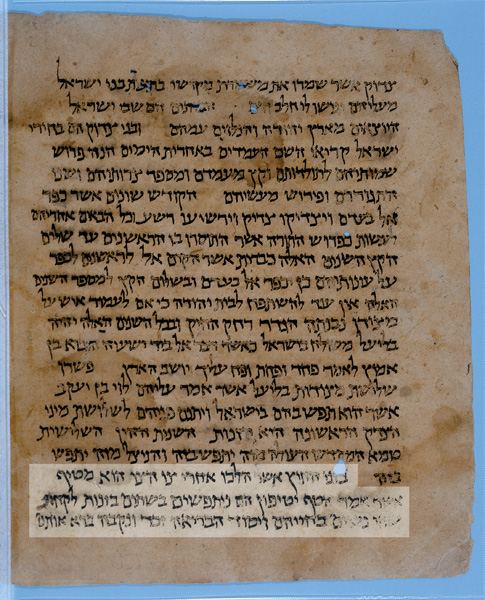Image Details

By permission of the Syndics of Cambridge University Library
This is one of the ten Qumran fragments to contain part of this particular rule. The complete passage is known from a tenth-century copy of the Damascus Rule found in the genizah, or storeroom for discarded sacred Hebrew manuscripts, of the Cairo Synagogue. The Cambridge University scholar Solomon Schechter, who discovered the manuscript in the 1890s, speculated that it was a medieval copy of a Jewish document written by a splinter sect before the Roman destruction of the Temple in 70 C.E. He called it the Zadokite Fragment after the priests described in the text as the “sons of Zadok.” Schechter died in 1915, about 35 years too early to see his theories validated by the discovery of virtually the same text at Qumran. On the page shown (referred to in scholarly terminology as T-S.10K6,2v), the highlighted lines (read from right to left) state: “The builders of the wall [perhaps a reference to the Essenes]…shall be caught in fornication twice by taking a second wife while the first is still alive, whereas the principle of creation is, ‘Male and female He created them’ [quoting Genesis 1:27].” Jesus, when asked whether divorce was lawful, quoted the same passage from Genesis and then came to the same conclusion: “What therefore God has joined together, let not man put asunder” (Mark 10:2–9; Matthew 19:3–6). No other ancient Jewish sources make this conclusion, leading author Broshi to conclude that Jesus borrowed the concept from the Essenes.
